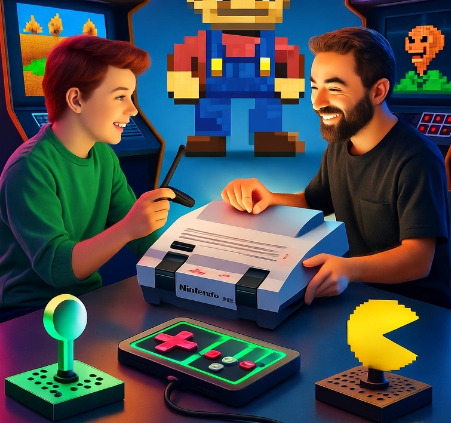
The Rise of Retro Gaming: Nostalgia Fuels a Cultural Comeback
In an era dominated by cutting-edge graphics and virtual reality, a surprising trend is sweeping the entertainment world: the resurgence of retro gaming. As of October 18, 2025, the nostalgia for pixelated adventures and 8-bit soundtracks has transformed from a niche hobby into a cultural phenomenon, captivating both Gen X nostalgics and Gen Z explorers. With platforms like X buzzing with #RetroGaming and sales of classic consoles soaring, the industry is witnessing a $5.8 billion market revival, blending the charm of the past with modern innovation.
The appeal lies in simplicity and sentiment. Titles like Super Mario Bros., The Legend of Zelda, and Pac-Man—once staples of arcades and early home systems—offer a stark contrast to today’s complex AAA titles. Players relish the challenge of mastering games without tutorials or autosave, a throwback to the 1980s and ‘90s when skill reigned supreme. Companies like Nintendo and Sega have capitalized on this, re-releasing classics on the Nintendo Switch Online service and Sega Genesis Mini, while indie developers craft new games with retro aesthetics, such as Shovel Knight. X posts highlight fans recreating childhood memories, with one user exclaiming, “Beating Contra with 30 lives feels like winning an Oscar!
”Hollywood isn’t far behind. The success of Ready Player One (2018) paved the way, and now, studios are greenlighting projects like a Street Fighter live-action reboot and an animated Tetris origin story. Retro gaming’s influence extends to music, with synthwave artists sampling chiptune beats, and fashion, where neon tees and joystick motifs dominate. Even celebrities like Mark Hamill have joined the fray, streaming Galaga sessions on Twitch, drawing millions of viewers.
This revival isn’t just about nostalgia; it’s a rebellion against sensory overload. Studies suggest 68% of gamers under 30 prefer retro titles for their straightforward gameplay, according to a recent Game Developers Conference survey. Modding communities on X thrive, with enthusiasts building custom Raspberry Pi arcade cabinets, sharing designs that marry vintage hardware with modern tech. The affordability of emulation software further democratizes access, letting anyone relive Sonic the Hedgehog on a smartphone.
Critics argue the trend might fade, citing the risk of oversaturation as every classic gets a remake. Yet, the community counters with innovation—events like the Classic Gaming Expo in Las Vegas, set for November 2025, showcase new-old hybrids, blending original code with AI-enhanced graphics. Developers are also exploring virtual reality adaptations, promising a Pong experience that feels like stepping into an arcade.
The cultural impact is undeniable. Retro gaming fosters intergenerational bonding, with parents introducing kids to Donkey Kong over family game nights. On X, #RetroFamily trends as users share photos of multi-generational score battles. It’s also a collector’s paradise, with a sealed Super Nintendo fetching $10,000 at auction, per Heritage Auctions.
As 3D-rendered worlds grow ever more immersive, retro gaming reminds us of entertainment’s roots—fun, challenge, and community. Whether it’s the thrill of a high score or the comfort of a familiar tune, this movement proves the past isn’t just history—it’s a thriving present. With Hollywood, gamers, and tech innovators all aboard, the retro wave shows no sign of fading, promising a future where yesterday’s pixels light up tomorrow’s screens.
